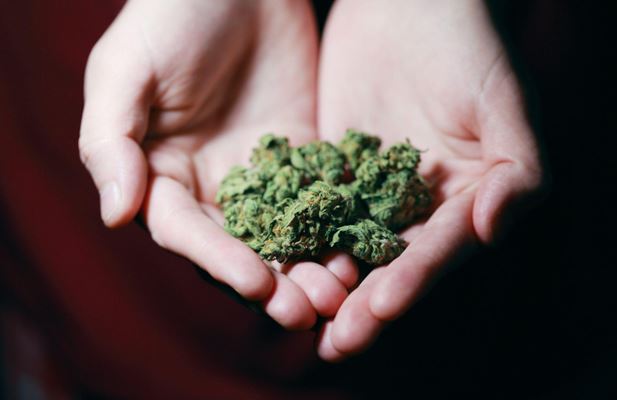Cultivation of cannabis involves growing plants in a medium with water and nutrients, typically indoors where conditions are more controlled.
Many cultivators utilize carbon filters to control odors in their grow-room and prevent detection and arousal by any of the surrounding areas.
Germination
Germination, or seed to seedling development, is the first stage in cannabis cultivation and occurs when seeds begin absorbing water for growth after emerging from their dormant period.
Cannabis seeds germinate best under conditions similar to spring weather – high humidity and consistent temperatures are ideal. Using high-quality seeds like the ones found at Green Nexus can help ensure a successful harvest. Furthermore, it is imperative that filtered or distilled water be usedsince tap water contains minerals that interfere with plant chemistry.
Alternatively, direct soil methods might be more appropriate.
Planting
Once a cannabis seed sprouts, it enters its vegetative stage. At this time, growers can train plants and manipulate their growth patterns for various purposes; for instance, indoor growers commonly employ techniques like Screen of Green (SCROG) and LST super cropping to control vertical growth while forcing dormant areas of the plant into producing colas that would otherwise remain dormant.
At this stage, cannabis plants require increased amounts of water for growth as well as an uninterrupted source of nitrogen- and potassium-rich nutrients. Furthermore, it is vitally important that their environment remains clean and dry as prolonged contact with surfaces can damage trichomes.

Lighting
Lighting is an integral component of cannabis cultivation. Cannabis plants are extremely sensitive to light, so finding the ideal combination of color, intensity, and frequency for their individual growth cycles is critical for their success.
Cultivators utilize lights with full spectrums to ensure their plants receive all the wavelengths found in nature, while also adjusting photosynthetic photon flux density (PPFD), which measures the total number of energy particles falling on one square meter per second.
Metal halide bulbs containing mercury and xenon produce blue light that is ideal for use during vegetative growth stages, but when flowering takes place, many growers opt for high-pressure sodium bulbs which emit yellow or orange illumination instead.
Watering
Watering cannabis cultivation is one of the key elements, and your approach will depend heavily on your growing medium. Soil type, as well as any holes at the bottom of containers, will determine how often and how much water to apply.
Make sure that the pH of your water falls between 6.5 and 7 for optimal cannabis cultivation, so the roots can absorb as many essential nutrients as possible from it. An acidic or alkaline pH could adversely impact this process.
Temperature
Temperature control is one of the key elements to keeping in check when cultivating cannabis, as high temperatures can significantly slow or stop its growth altogether.
High temperatures also increase susceptibility to various problems like spider mites, white powdery mildew, root rot, nutrient burn from increased water transpiration (resulting in stretched branches and wilting stems), andreduced “smell” due to terpene degradation as well as spider mite infestation.
Pests
Pests present one of the greatest challenges to cultivation, necessitating considerable vigilance and expertise to manage effectively. Your growing medium choice and environmental conditions may significantly impact their presence – for instance, fungus gnat larvae may thrive in soil-based grow rooms while outdoor cannabis plants could experience attacks by aphids.
Aphids feed on plant tissues, leading to stunted growth, wilted leaves, and sticky honeydew residues.
Fungus gnats pose another threat by carrying pathogens that disrupt natural defense mechanisms; spraying soapy water, neem oil or diatomaceous earth may help. Thrips eat cannabis leaves leaving light-colored silver streaks behind that reduce yield and potency significantly.
Diseases
Cultivators who specialize in cannabis cultivation face an array of diseases when growing plants. These include powdery mildew (Golovinomyces) and bud rot (Botrytis cinerea), both fungal infections that thrive in humid conditions and can quickly decimate an entire crop.
Powdery mildew appears as white, powdery growth on leaves and stems of plants, and can reduce vigor by inhibiting photosynthesis, leading to bud rot, and creating an unpleasant musty odor.
Botrytis fungus can be difficult to spot due to its dormant state. Common in humid environments and associated with bud rot, growers should employ ozone water treatments and sterilize all tools used on plants to combat this threat.
Odor
Effective odor control is one of the key elements of cannabis cultivation. Cannabis plants release numerous odor-causing molecules known as terpenes when entering the flowering stage, producing pungent, skunky, floral, or fruity smells which may travel up to several miles from grow facilities if plants are budding.
Seasoned cultivators employ various strategies to combat odors in cultivation facilities, including submerging potting mix in water and perlite overnight, mixing activated charcoal with soil to absorb strong smells, placing carbon filters on intake and exhaust fans, and using an air purifier which also cleans surfaces in cultivation facilities.

